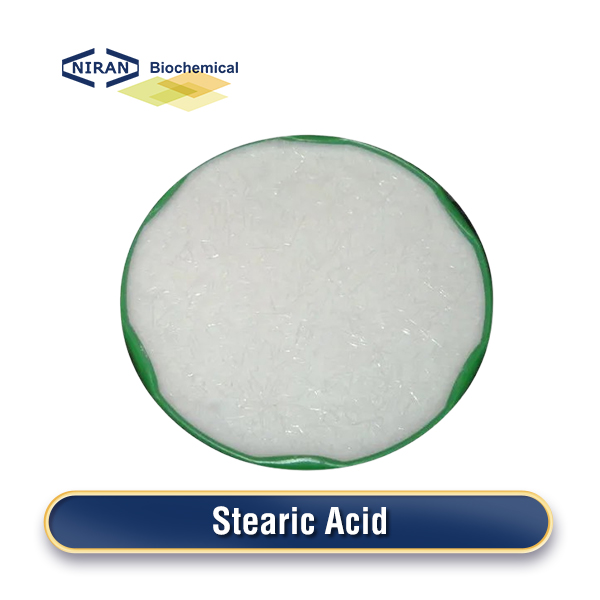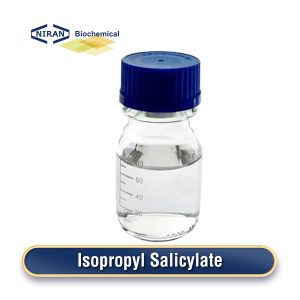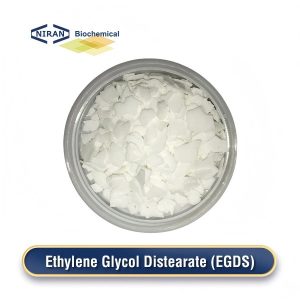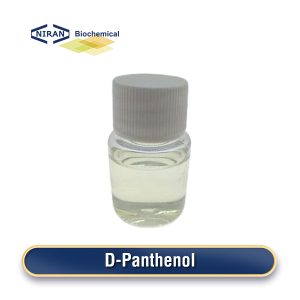Stearic Acid
- CAS Number: 57-11-4
- Chemical Formula: C18H36O2
- MOQ: 1000KG
- Shelf Life: 2 years
- Forms: Flake, Powder
- Synonyms: Octadecanoic acid, 1-Octadecanoic acid, Octadecyl acid
Product Description
What Is Stearic Acid?
Animal fats and vegetable oils frequently include stearic acid, a saturated fatty acid. It is a mildly scented, white, waxy solid that is frequently used to make lubricants, candles, soaps, and cosmetics. In many compositions, it acts as a stabilizer and emulsifier.
Preparation Method: Stearic acid is primarily produced through the hydrogenation of unsaturated fats, typically from vegetable sources like palm or soybeans. Solid stearic acid is created when this mechanism breaks the double bonds in unsaturated fatty acids into single bonds. It can also be extracted from animal fats.
Related Parameters:
| Items | Standards |
| Colour Hazen | ≤60 |
| Acid Value mgKOH/g | 207-211 |
| Saponification Value mgKOH/g | 208-212 |
| Iodine Value gl2/100g | ≤0.5 |
| Moisture % | ≤0.2 |
| Melting Point ℃ | 53-57 |
| C12+C14 % | ≤1.5 |
| C16 % | 52-59 |
| C18 % | 40-44 |
Recommended Dosage of Stearic Acid:
| Applications | Dosage |
| Soaps and Detergents | 2%-3% |
| Cosmetics and Skincare | 3%-4% |
| Candles | 5%-7% |
| Lubricants | 2%-6% |
| Plastics and Rubber | 0.5%-1% |
| Food Industry | 0.5%-1.5% |
| Pharmaceuticals | 1.5%-2.5% |
| Textile Industry | 3%-4% |
Stearic Acid Has Wide Range of Uses:
Soaps and Detergents
Stearic acid is used to harden soaps, providing texture and improving lather. It also acts as an emulsifier in detergents.
Cosmetics and Skincare
By serving as an emulsifier, thickener, and stabilizer, it enhances both the texture and moisturizing effects of skincare products.
Candles
It is used to harden wax and enhance the appearance and burn time of candles.
Lubricants
In industrial lubricants, stearic acid reduces friction and enhances smoothness.
Plastics and Rubber
It serves as a dispersing agent in plastic processing and rubber manufacturing.
Pharmaceuticals
In tablets, stearic acid acts as a binder and stabilizer.
Textile Industry
It softens and finishes textiles, giving them a smooth feel.
User Asked Question:
Q: Is it possible to biodegrade stearic acid?
A: Indeed, stearic acid is biodegradable, which means that microbes can break it down spontaneously over time. This is particularly true for stearic acid derived from plant sources like palm oil or soy oil, which are more environmentally friendly compared to animal-based sources.




